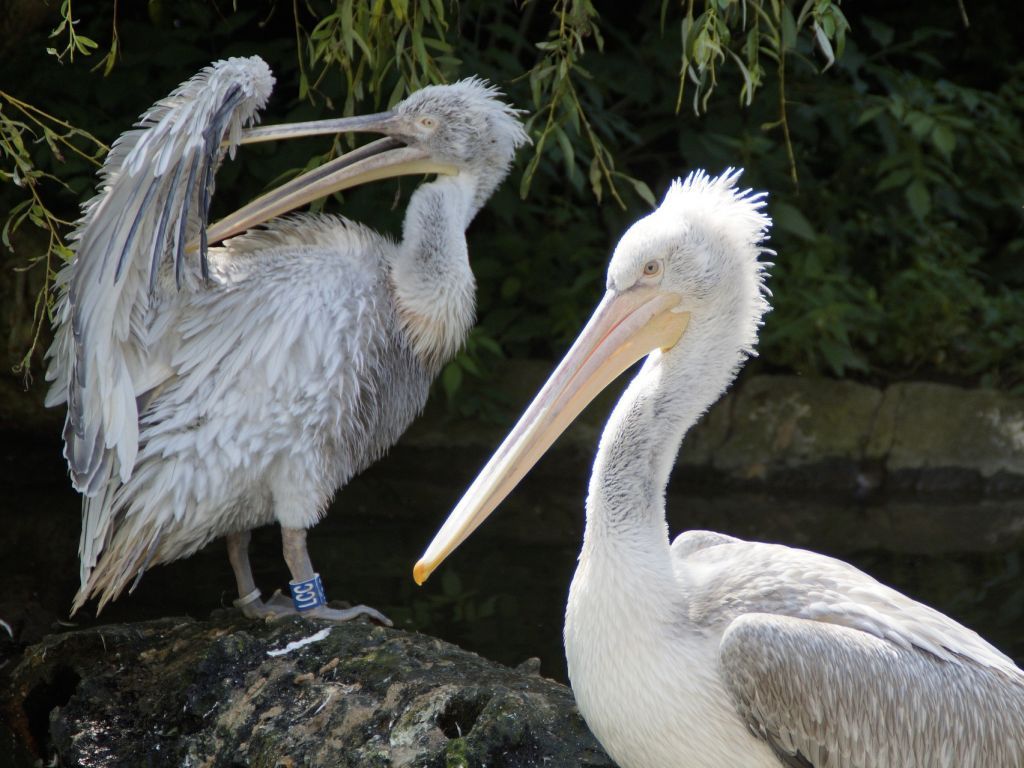Pelicans return to the Danube after 100 years
(Photo: Efraimstochter/Pixabay)

Ornithologist Milan Ruzic explains that pelicans sometimes come to search for food. In the past, pelicans used to populate the great swamps along the Danube, the Tisa and the Sava, but those areas dried out over time, turning into forests or farming land and causing these birds to lose their habitat in Serbia back in the 1940s and move mostly to the south of Europe, with a smaller number populating the Skadar Lake area in Montenegro, Albania and Greece.
– Still, at times, outside the nesting period, pelicans head upstream along the Danube to places where they can find food, and it can be located primarily around the HPP Djerdap II, a natural dam where fish gather in large numbers. So, there have been several isolated cases before – Ruzic says and reminds that the pelican is still one of the most endangered animals in the world.
The return of pelicans is an unusual phenomenon, which ornithologist Dr Sasa Marinkovic of the Sinisa Stankovic Institute calls “an accidental occurrence in the birds' migration” in his statement for RTS.
– This doesn't mean that they will stay in our area, but it does indicate that the program of the protection of pelicans, carried out in Bulgaria and Greece, has been successful. The small pelican used to nest in Pancevacki Rit, but this local species is extinct, and if pelicans do return, it is the small pink pelican that will be the first to return – Marinkovic explained.
He has also warned that the situation is quite bad and the there are numerous problems – the great bustard, an imposing bird, no longer nests in Serbia and the eastern imperial eagle is facing extinction.
– The latest occurrence makes us optimistic that something can be changed and that it should be changed now, and not when these species are already extinct – Marinkovic explains and adds that the Dalmatian pelican is on the red list of endangered animals.
In order for these species to be saved, the habitats need to be preserved. When it comes to the Dalmatian pelican, the habitat is Carska Bara.
– Water habitats are the most endangered due to water pollution. We need to preserve them and include them in one of the future programs in order for them to be repopulated – Marinkovic said and mentioned the increasingly frequent procedure of having species breed in captivity and then returning individual birds to a natural environment.
Flocks of Dalmatian pelicans, while they're still here in these areas, can be seen in Golubac, Veliko Gradiste and Mala Vrbica in Kladovo.
Tags:
Dalmatian pelicans
bird habitats on the Danube
ornithology
Milan Ružić
HPP Đerdap 2
Institute Siniša Stanković
Saša Marinković
small pelican
Pančevački Rit
Skadar Lake pelican
eastern imperial eagle
Comments
Your comment
Most Important News
Full information is available only to commercial users-subscribers and it is necessary to log in.
Follow the news, tenders, grants, legal regulations and reports on our portal.
Registracija na eKapiji vam omogućava pristup potpunim informacijama i dnevnom biltenu
Naš dnevni ekonomski bilten će stizati na vašu mejl adresu krajem svakog radnog dana. Bilteni su personalizovani prema interesovanjima svakog korisnika zasebno,
uz konsultacije sa našim ekspertima.


 Izdanje Srbija
Izdanje Srbija Serbische Ausgabe
Serbische Ausgabe Izdanje BiH
Izdanje BiH Izdanje Crna Gora
Izdanje Crna Gora


 News
News







